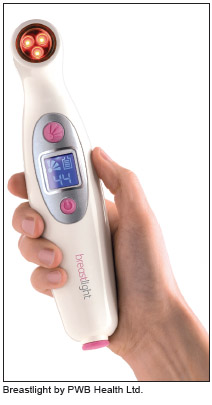What are today's most important trends regarding home healthcare medical devices? One of the most important trends we are seeing in the use of home healthcare medical devices is increased usage due to the move toward self-care to reduce costs and boost efficiency of home-care delivery; consumers' increasing medical knowledge and desire to play a larger role in their own care and greater emphasis on monitoring of widespread, chronic conditions, such as diabetes and high blood pressure, to improve outcomes. Examples of home healthcare devices include continuous positive airway pressure devices, nebulisers, drug delivery devices, digital signal processing hearing aids, glucose monitoring systems and self-test (in vitro diagnostic) devices. The global market for home healthcare devices is set to grow by more than 9% by 2012, with the market exceeding $70 billion in 2012. Why are plastics increasingly important in the design and manufacture of home healthcare medical devices? Home healthcare is a fast-growing market segment where SABIC Innovative Plastics materials are playing a pivotal role. Consumers using devices at home have specific needs that only plastics and plastic compounds can address. First, devices need to be lightweight and portable, so patients-particularly the elderly, ill and disabled-or their caregivers can lift, move and operate them without assistance. Plastics can significantly reduce weight and mass when used as replacements for metal and other traditional materials. Another requirement for home use is ease of maintenance-plastics are easy to keep clean and are resistant to common household cleansers. To encourage consumer use, these devices need to be aesthetically pleasing. In fact, they are becoming household "furniture" that needs to blend with home furnishings. Plastics can be coloured, given different manufacturing surface textures and finishes, and, of course, are easily molded into pleasing designs. Finally, it is important to control costs, so that these consumer devices are affordable. Plastics help reduce system costs through part consolidation, elimination of secondary operations, such as painting, and acceleration of throughput.
 What material technologies support design and development of new home healthcare devices? The wide variety of high-performance plastics available from SABIC Innovative Plastics offers different property combinations needed to meet diverse device requirements. One of the most promising areas is the evolution of plastic compounds. Compounds can deliver exceptionally high performance, including mechanical strength, lubricity, wear resistance and dimensional stability, to facilitate tight tolerances for device specifications. For example, SABIC Innovative Plastics' LNP Lubricomp compounds are excellent candidates for applications where lubrication and wear resistance are required, and LNP Thermocomp compounds are known for their inherent toughness. In addition to plastic compounds, materials, such as SABIC Innovative Plastics' Xylex polycarbonate/polyester resin, have a good fit in healthcare applications primarily because of its ability to be water-clear or colourable, biocompatible, lipid resistant and gamma sterilisable and to maintain a good balance between chemical resistance and toughness. Xylex resin is also a good choice for applications, such as disposables and device/pump housings. What about consumer appeal? How do plastics help drive adoption of home devices? With the expansion of home healthcare, designers are focusing on ergonomics and aesthetics to make devices comfortable and attractive for consumers. Plastics give device manufacturers greater design freedom than with metal and glass. The ability to mold complex shapes and the ability to consolidate parts are important in creating eye-catching ergonomic designs. Just as the right design makes a devicAir Zoom Vomero 11
What material technologies support design and development of new home healthcare devices? The wide variety of high-performance plastics available from SABIC Innovative Plastics offers different property combinations needed to meet diverse device requirements. One of the most promising areas is the evolution of plastic compounds. Compounds can deliver exceptionally high performance, including mechanical strength, lubricity, wear resistance and dimensional stability, to facilitate tight tolerances for device specifications. For example, SABIC Innovative Plastics' LNP Lubricomp compounds are excellent candidates for applications where lubrication and wear resistance are required, and LNP Thermocomp compounds are known for their inherent toughness. In addition to plastic compounds, materials, such as SABIC Innovative Plastics' Xylex polycarbonate/polyester resin, have a good fit in healthcare applications primarily because of its ability to be water-clear or colourable, biocompatible, lipid resistant and gamma sterilisable and to maintain a good balance between chemical resistance and toughness. Xylex resin is also a good choice for applications, such as disposables and device/pump housings. What about consumer appeal? How do plastics help drive adoption of home devices? With the expansion of home healthcare, designers are focusing on ergonomics and aesthetics to make devices comfortable and attractive for consumers. Plastics give device manufacturers greater design freedom than with metal and glass. The ability to mold complex shapes and the ability to consolidate parts are important in creating eye-catching ergonomic designs. Just as the right design makes a devicAir Zoom Vomero 11
 iConnectHub
iConnectHub
 Login/Register
Login/Register Supplier Login
Supplier Login


























